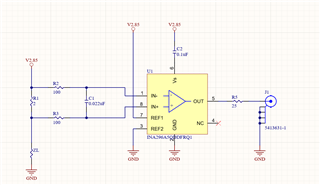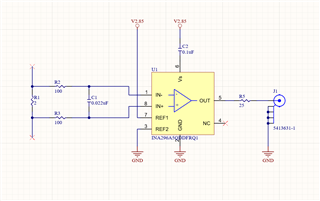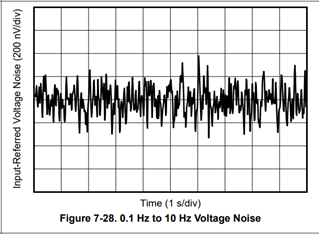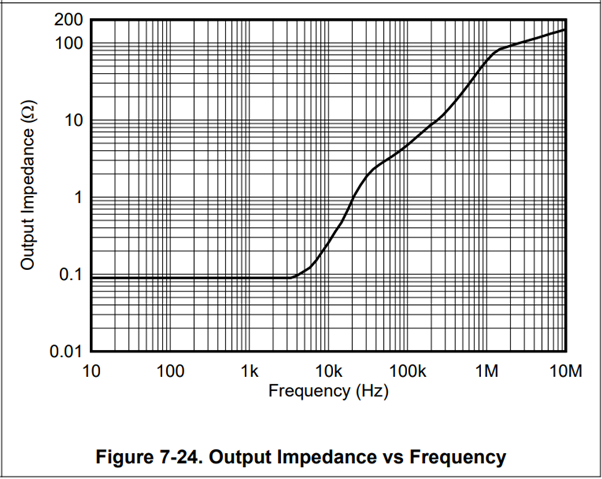Hi,
I trying to use the INA296A5QDDFRQ1 in this configuration:
where R1 is the current sensing resistor. However, when I try to get a baseline of the offset voltage and input bias current with no load or power,
the output voltage is much noisier than what is reported in the spec:

What can I do to reduce the noise?




